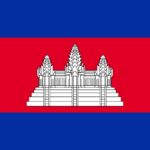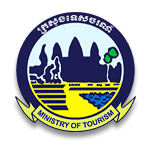Issue Description
Tourism is traditionally an important contributor to Cambodia’s economy and international standing. Travelers are attracted by the country’s iconic Angkor Wat complex and other world heritage sites, as well as its diverse natural landscapes, including jungle, mountains, and coastline. An often-overlooked icon in the eyes of international tourists is the Mekong River. In many foreigners’ minds, more than any other river, the Mekong inspires feelings of nostalgia, romance, exotic landscapes, adventurous explorations, and mystery.
COVID-19 hit Cambodian tourism hard, similarly to other countries. 2022 saw signs of recovery, with more international arrivals in Cambodia than the year before. However, despite these increases, tourism has not yet recovered to pre-COVID-19 levels. According to a 2022 Ministry of Tourism report, in revenue terms, tourism receipts amounted to USD 1.4 billion in 2022, a dramatic increase compared to the meager USD 184 million in 2021, but still a 71.2% decrease from 2019’s peak amount of USD 4.9 billion. The share of tourism in national GDP has also gone down, from 12.7% in 2018 to 1.8% in 2021 (understandably, given the wide travel restrictions at the time), and bouncing back – albeit very slightly – to 3.6% in 2022.
Another statistic points to there still being an ongoing, structural challenge in the tourism industry, and that is, how to convince the average traveler to Cambodia to stay longer in the country. The average tourist stay in 2022 in Cambodia was two nights and three days, which is quite low and definitely insufficient to discover the country’s full potential range of attractions.
If we look more specifically at international tourist flows into Siem Reap airport, gateway to Angkor Wat, we notice the same pattern of declining arrivals. Although it is often cited that declines in arrivals are due to the COVID-19 pandemic, this trend already started in 2019, before the pandemic hit. 2019 figures compared to 2018 show a 14% decrease in total arrivals, from 1.9 million visitors in 2018 to 1.6 million in 2019. Particularly significant was the decrease in August arrivals – traditionally a high-season month – being 24% down from 2018 to 2019. More recently, monthly visitors in January, February, and March 2023 were down 79%, 78%, and 77% from their corresponding months in 2018. Even taking into account the ongoing COVID-19 recovery factor, these decreases are considerable, and more noticeable compared to neighbouring countries like Thailand or Vietnam, where post-COVID-19 tourist numbers have recovered more rapidly.
Declining tourist numbers, both before and after the pandemic, could be explained simply by being a coincidence or a result solely of external factors, such as higher energy prices and geopolitical instabilities. However, corroborated by the ongoing significance of structural challenges in the sector such as short average tourist stays, as well as a contrasting picture of more rapid tourism recovery levels in Thailand and Vietnam, it could point to there being an underlying need for Cambodia’s tourism industry to renew and diversify itself.
The two key policy tools of the Royal Government of Cambodia (RGC) to promote the tourist sector have been the institution of Tourism Master Plans in selected geographical areas (such as Sihanoukville) and Qualified Investment Projects (QIPs), a set of criteria and benefits for investors in projects in a range of economic sectors, including tourism.
As much as these tools represent a step in the right direction, they arguably still fall short of untapping the full regulatory potential that can be unleashed to reinvigorate Cambodia’s tourism sector. This is particularly the case for QIPs in the tourism sector. Evidence suggests that investors would much appreciate if the RGC were more involved in proactively setting aside certain geographical areas for qualified investments, meaning certain tax and administrative benefits would be granted automatically for projects in these areas. This way the RGC would be setting the pace for directing investments in the country, rather than relying on the availability and interest of prospectors.
Impact on business
Cambodia’s tourism arrivals are likely to continue increasing from their low COVID-19 levels. However, this does not mean that structural challenges will not remain in the industry. Cambodia needs to diversify its tourism offer away from traditional packages revolving around Angkor Wat and a few other traditional sites. This over-reliance on a few sites could be a partial explanation for the ongoing low average tourist stays in the country. To do so, authorities need to enhance the appeal of other areas with high tourism potential, such as its coastline, mountain areas, and the Mekong belt.
The risk of not doing so is that the tourism industry in Cambodia becomes more stagnant, meaning less potential for growth, new jobs, and revenues, and less appeal for international visitors beyond token, one-time visits to world heritage sites. Finally, Cambodia risks losing the opportunity of following the virtuous examples of neighbouring countries, which have managed to set up special economic tourist zones in selected areas, which are now booming. An example is Phu Quoc island, in Vietnam, off the coast of Cambodia. Phu Quoc offers investors a beneficial package involving reduced VAT rates, reduced visa requirements for international travelers, and other incentives; its visitors have boomed.
Recommendation
- Set investment sites for special economic tourism zones, with a comprehensive package of financial and regulatory benefits for investors.
We therefore respectfully recommend that the Royal Government of Cambodia create a set of fiscal incentives automatically granted to companies developing selected tourism-related activities or geographic areas, and that these opportunities be market and promoted energetically within the investing community.
Therefore, the RGC is likely to take on a more active steering role in determining which communities and areas of the country receive FDI, increasing their development levels. Setting special economic zones for tourism activity and investment can have several benefits for Cambodia’s tourism sector. Firstly, it can attract more investment and funding into the sector, leading to the development of new tourism infrastructure and attractions. Secondly, it can create more job opportunities for local people, helping to boost the economy and reduce poverty. Thirdly, it can provide a more streamlined regulatory framework for investors, reducing bureaucracy and making it easier to do business in the country. Finally, it can help to promote sustainable tourism practices and protect the country’s natural and cultural heritage.
Royal government of Cambodia
Initiative from Eurocham: The issue has been raised by the Tourism & Hospitality Committee within The White Book edition 2024 in the Recommendation No. 62.

National Counterparts

Ministry of Tourism

